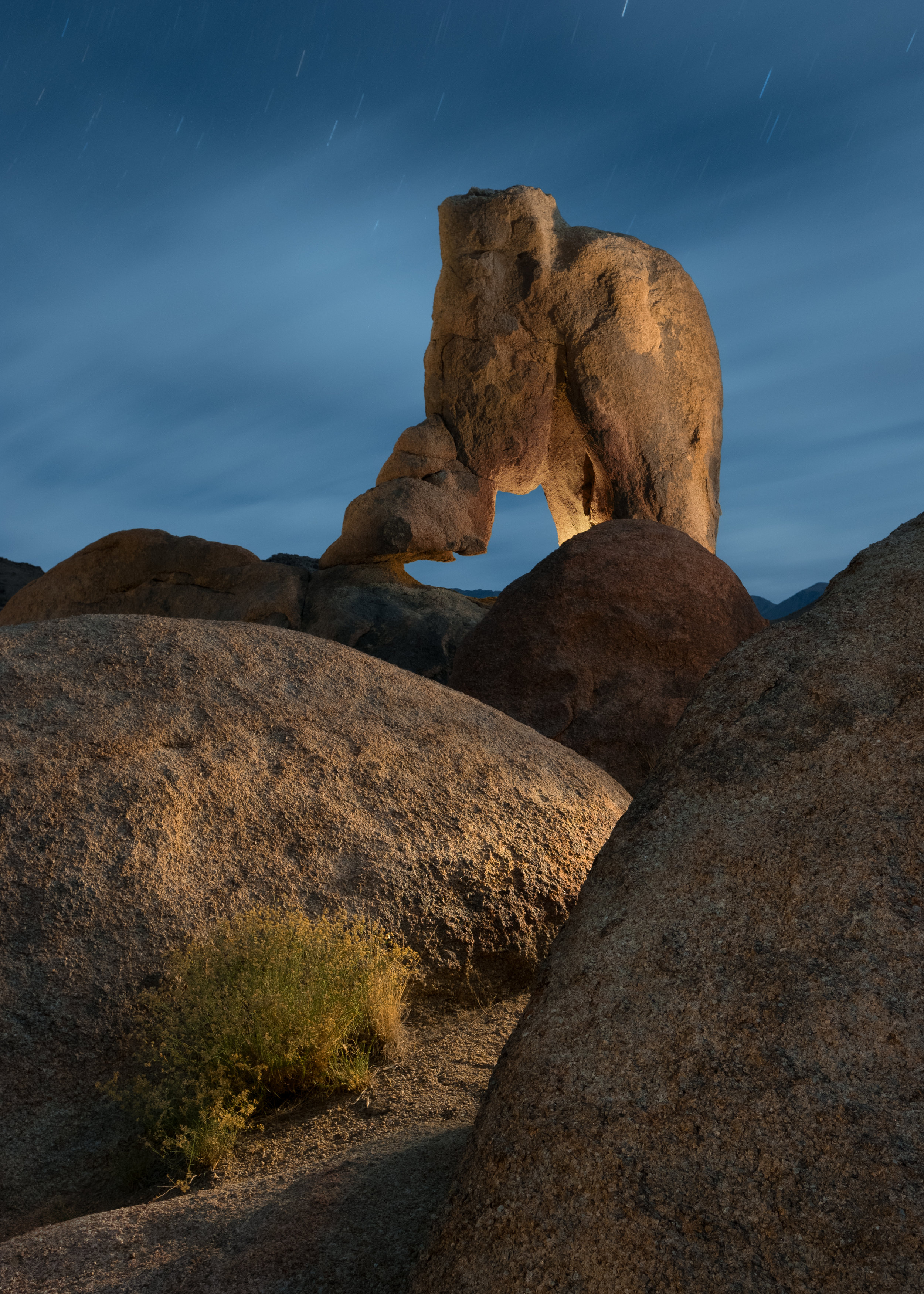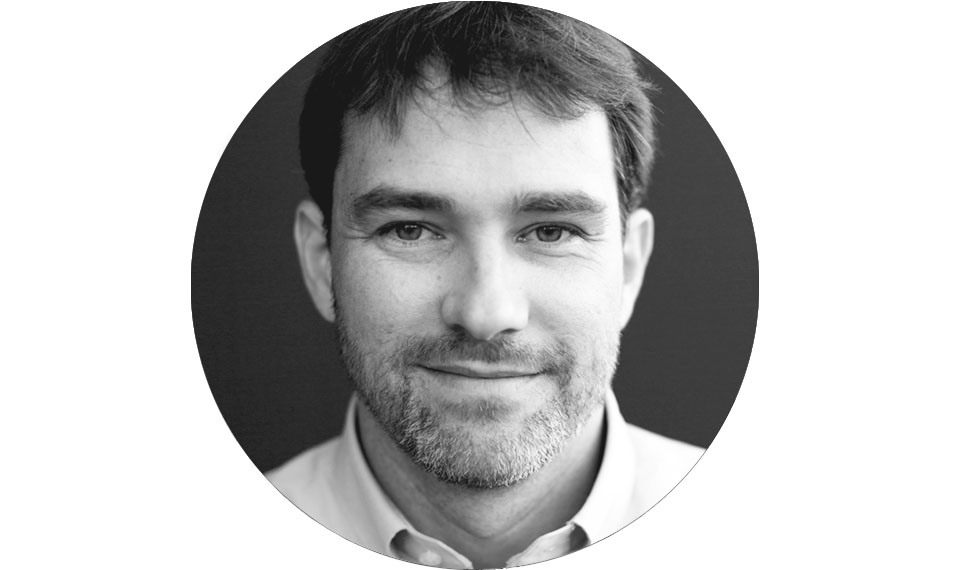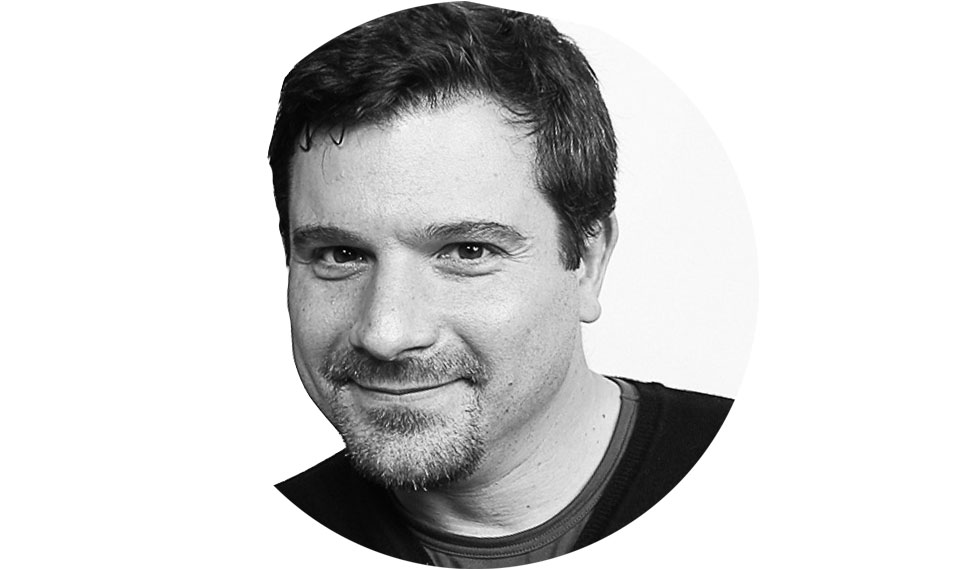Trona Pinnacles and Alabama Hills
Two fantastical places in the southern California desert, both known for rock formations that photographers love to make art with. Trona Pinnacles, a collection of 500 spires of rock rising from a dry ancient lake bed. And the Alabama Hills, a set of arches and other formations in the stark and mesmerizing Owens Valley. We'll be there in full moonlight for a light painting-intensive workshop, capturing the nighttime beauty of these surreal and wild places.
Workshop Gallery
Workshop Details
October 25-30, 2020 — Completed
This is a 5-night, 6-day workshop. Your adventure begins on the morning of Sunday, October 25, and ends after a final slideshow on the afternoon of Friday, October 30.
$1,750 + applicable taxes. Register below.
Skill level
Open to all who have an understanding of the basic principles of photography and of their cameras.
Class size
14, with 2 instructors — 7:1 ratio
Park website
Trona Pinnacles, California Desert National Conservation Area
Alabama Hills
Workshop Leaders
Register Now
Deposit of $500 is required to reserve your spot at the workshop.
Balance of $1,250 due on July 27, 2020.
Pay balance here.You may choose the “Pay in Full” ticket if you desire to pay all at once.
Last day for a cancellation request is July 26, 2020 (see cancellation and refund policy).
The workshop fee does not include transportation to and from the workshop or the shoot locations, and does not include lodging or food.
THIS EVENT HAS PASSED. THANKS FOR YOUR INTEREST!
The Trona & Alabama Hills Experience
This workshop will explore two of the most fascinating locations for night photography and rock formations in the deserts of southern California: Trona Pinnacles and the Alabama Hills.
Trona Pinnacles is a surreal landscape of more than 500 tufa spires that rise as much as 140 feet from a dry lake bed. A visitor could be forgiven for thinking they’re on another planet, for the area has been used as a natural set for sci-fi films and TV shows such as Battlestar Gallactica, Lost in Space and Planet of the Apes. The formations can be mixed and matched and juxtaposed to create endless possibilities for compositions. Walking around is relatively easy, and the open landscape provides plenty of space to move to create angles for light painting.
The Alabama Hills are a range of rock formations to the east of the Sierra Nevada Mountains. Television and movie productions—especially Westerns—have been filmed here since the 1920s. Dozens of natural arches are among the main attractions at the Alabama Hills, and these will be the focus of the second half of our workshop. The best known is Mobius Arch, and others include Lathe Arch, Lady Boot Arch and Cyclops Arch.
The workshop is scheduled to run for a few days leading up to the full moon, which will add fill for the light painting that these photography subjects are so well suited for.
What You Should Know
Participants must have at least basic photo skills, know their cameras well, and be comfortable shooting RAW in manual mode with a DSLR or high-end mirrorless camera.
Night photography experience is not necessary, but even folks with extensive experience shooting at night will find this class challenging, stimulating and inspiring. For more advanced night photographers, we can offer a portfolio review and specific challenges and goals, and will offer guidance in the field if you mainly want to concentrate on creating portfolio images or learning more advanced techniques.
If you would like to attend this workshop but are unsure whether you have adequate night photography skills, we can offer pre-workshop tutoring to get you ready for your adventure with us. Alternatively or additionally, a few of us have written books that may be productive pre-workshop reads.
What You Will Learn
This will be a light painting-intensive workshop, and the educational component will be built as such.
TOPICS COVERED WILL INCLUDE:
light painting, both with flashlights and low-level LED panels
using PhotoPills to determine where the moon will be
star stacking to create star trails in moonlit skies
ideal white balances for shooting in moonlight
and more …
This workshop will have both field and classroom instruction. We will be in the classroom each day, and out in the field at different locations each night. Participants can stay out shooting as long as they, or their camera’s batteries, hold out. While in the field, the instructors will demonstrate their own techniques and will work with participants one-on-one to make sure everyone gets the most out of the workshop. During classroom sessions, there will be presentations by the instructors, but we will focus on developing your images and sharing everyone's work and ideas with each other. Each day will have a review of the previous night’s work.
Our locations have generous room to explore, so everyone will be able to spread out and not get in one another’s way. Each participant will have the opportunity to work one-on-one with Chris and Tim in the field.
We do not tell our attendees what to photograph, and won’t line you up in a row to all shoot the same thing (unless it’s helpful to get some people on track). Instead, we encourage you to use what you have learned to create your own unique images, and to let us guide you through the process should you desire. We do not teach you to do what we do, but rather how to develop your own night vision.
Night & Light Conditions
Travel
The area is isolated, but well worth the effort to get there. If you are interested in carpooling or sharing a rental car, let us know and we will try to connect you with another student looking for the same. You are responsible for arranging and paying for your own transportation.
Nearby Airports:
Ontario (ONT) — 2 hours to Ridgecrest, California
Burbank (BUR) — 2.25 hours
Los Angeles (LAX) — 2.5 hours
Mammoth (MMH) — 3 hours, but limited flight options
Las Vegas (LAS) — 3.5 hours
Food & Lodging
We will base the workshop in two towns to give us easy access to both sets of shoot locations. The first part of the trip will be based in Ridgecrest, California, and the second in Lone Pine. We will send hotel information and booking codes after registration.
You are not required to stay at the official workshop lodging, though doing so does make it easier to meet with the group each morning. If you are interested in sharing a room, let us know and we will try to connect you with someone like-minded in the group.
We encourage eating two meals per day—a good late breakfast and a great late lunch. When on the night shoots, you may wish to bring snack food or a sandwich and plenty of water. Both Ridgecrest and Lone Pine have restaurant options and groceries.
You are responsible for arranging and paying for your own meals and accommodations.
Weather
It’s the desert in mid fall. It’ll likely be warm and sunny. In both Ridgecrest and Lone Pine you can expect highs in the 80s F, nighttime lows in the 50s.
Recommended Attire
Shorts and short-sleeve shirts for daytime, light pants and long-sleeve shirts for night. A sweatshirt and medium-weight jacket might prove be useful. Comfortable and protective shoes are recommended for getting around. There won’t be long hikes, but we will be on trails, so quality trails shoes or hiking boots would be optimal.
Considerations
No vigorous activity will be required during the workshop, but please consider your physical abilities prior to registering. There won’t be any long or difficult (or even moderate) hikes, but there will be trails involved. You should be comfortable carrying your own equipment over uneven ground in the dark.
Please read our FAQs section for more information about skill and gear requirements, and other information that pertains to all our workshops.
If you have questions, please contact us—we're happy to talk it over with you.
A Change of Plans ...
“As a photographer, you just want to jump out of the car and start shooting—and not stop until you’re just too darn tired to lift the camera anymore.”
Really, I wanted to shoot in Death Valley.
I was traveling with my friend Susan to run a workshop together, and we planned to stay a few extra days to shoot for ourselves. Death Valley is a huge park, so despite having been there about half a dozen times, there’s still plenty of photo opportunities left for me to explore. And that was my plan.
But Susan had another idea—pulling all-nighters at Trona Pinnacles to photograph the Milky Way. I’m always up for new places, so I said OK.
Good decision.
Trona Pinnacles is one of those places where you know you’re in for something special as soon as you turn off the main road. Access is via a dirt car trail on BLM land, which runs across railroad tracks and off into what looks like a featureless desert valley. But then the distant horizon begins to take on a funny, bumpy shape. And as you drive closer, those bumps grow into this huge collection of 100-plus-foot rock spires, making the desert look like it boiled up out of the hot ground. As a photographer, you just want to jump out of the car and start shooting—and not stop until you’re just too darn tired to lift the camera anymore.
The area isn’t too big. It’s big enough to be invisible to other photographers, and to campers, and to other folks who might be touring around. But it’s not big enough to get lost. Still, it’s otherworldly and just downright fun, and that makes the photographic possibilities endless.
So, thank you, Susan. Good idea.



























